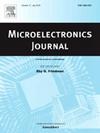Study of DRAM data failure mechanism and mitigation scheme under the combination of TID and row hammer
IF 1.9
3区 工程技术
Q3 ENGINEERING, ELECTRICAL & ELECTRONIC
引用次数: 0
Abstract
In this study, we utilize the TCAD simulation tool to investigate the combined impact of total ionizing dose (TID) and row hammer effects on dynamic random access memory (DRAM) data integrity. The results show that TID increases the device's leakage current and induces the formation of acceptor-type traps, which facilitate electron capture and release. We identify the gate oxide and the channel as key vulnerabilities in the failure process. The channel serves as the primary site for electron migration, while the gate oxide acts as the main source of positive charge. To address these vulnerabilities, we propose an innovative P-type uniform heavy doping strategy, which blocks electron leakage paths by heavy doping beneath the channel. Compared to traditional methods, this strategy not only avoids the expansion of the gate oxide area and the enhancement of the electric field but also significantly improves the reliability of DRAM in radiation environments, increasing the row hammer threshold (NRH) by a factor of four.
TID和行锤联合作用下DRAM数据失效机理及缓解方案研究
在本研究中,我们利用 TCAD 仿真工具研究了总电离剂量(TID)和行锤效应对动态随机存取存储器(DRAM)数据完整性的综合影响。结果表明,总电离剂量会增加器件的漏电流,并诱导形成受体型陷阱,从而促进电子的捕获和释放。我们发现栅极氧化物和沟道是失效过程中的关键漏洞。沟道是电子迁移的主要场所,而栅极氧化物则是正电荷的主要来源。针对这些弱点,我们提出了一种创新的 P 型均匀重掺杂策略,通过在沟道下方重掺杂来阻断电子泄漏路径。与传统方法相比,这种策略不仅避免了栅极氧化物面积的扩大和电场的增强,还显著提高了 DRAM 在辐射环境中的可靠性,将行锤阈值 (NRH) 提高了四倍。
本文章由计算机程序翻译,如有差异,请以英文原文为准。
求助全文
约1分钟内获得全文
求助全文
来源期刊

Microelectronics Journal
工程技术-工程:电子与电气
CiteScore
4.00
自引率
27.30%
发文量
222
审稿时长
43 days
期刊介绍:
Published since 1969, the Microelectronics Journal is an international forum for the dissemination of research and applications of microelectronic systems, circuits, and emerging technologies. Papers published in the Microelectronics Journal have undergone peer review to ensure originality, relevance, and timeliness. The journal thus provides a worldwide, regular, and comprehensive update on microelectronic circuits and systems.
The Microelectronics Journal invites papers describing significant research and applications in all of the areas listed below. Comprehensive review/survey papers covering recent developments will also be considered. The Microelectronics Journal covers circuits and systems. This topic includes but is not limited to: Analog, digital, mixed, and RF circuits and related design methodologies; Logic, architectural, and system level synthesis; Testing, design for testability, built-in self-test; Area, power, and thermal analysis and design; Mixed-domain simulation and design; Embedded systems; Non-von Neumann computing and related technologies and circuits; Design and test of high complexity systems integration; SoC, NoC, SIP, and NIP design and test; 3-D integration design and analysis; Emerging device technologies and circuits, such as FinFETs, SETs, spintronics, SFQ, MTJ, etc.
Application aspects such as signal and image processing including circuits for cryptography, sensors, and actuators including sensor networks, reliability and quality issues, and economic models are also welcome.
 求助内容:
求助内容: 应助结果提醒方式:
应助结果提醒方式:


